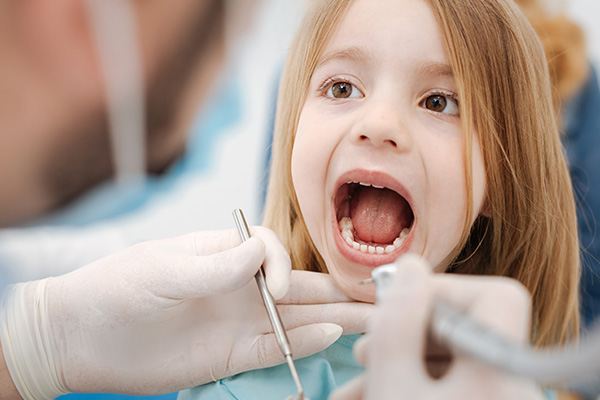Important Preventive Pediatric Dentistry Visits

A key part of raising healthy children is scheduling pediatric dentistry visits on a routine basis. Regular checkups should begin in the first year of life and continue into adulthood. In addition to a standard cleaning and examination, some appointments will involve additional elements to protect a child's teeth.
Key visits for pediatric patients
Regular dental visits help maintain oral health while promoting good brushing and flossing habits. However, some appointments are particularly valuable in terms of preventative care.
First dental checkup
Once a child's first teeth begin to surface, parents should schedule an appointment with a preventive pediatric dentist. One of the primary goals of dental checkups at this age is to help babies and toddlers become accustomed to cleanings while building a relationship with the staff. Once a child is comfortable with the environment, they are more likely to remain calm and even enjoy checkups.
At this stage, dentists can advise parents on proper home care and how to handle bottle transitions and thumb or finger sucking habits. In addition, dental professionals will check for proper growth and development while searching for warning signs of potential dental issues.
First X-rays
Between the ages of four and six, preventive pediatric dentistry checkups and cleanings will be longer and more detailed. During a visit in this age range, a child will undergo the first set of X-rays. This helps detect otherwise invisible signs of tooth decay, to which young children are particularly prone. It also allows dentists to check for the proper growth and development of the permanent teeth below the gum line.
Orthodontic evaluation
In the past, parents have waited until all permanent teeth have grown in before addressing alignment problems. For most children, this happens in the early teenage years. However, dental professionals now recommend that children be seen for orthodontic evaluation around age seven, when some baby teeth still remain. During these years, it is possible to perform certain treatments to promote proper formation while the permanent teeth continue to surface. At this age, issues are often faster and easier to treat with less discomfort.
Cavity prevention
Young kids are likely to develop cavities at some point during childhood. Molars are the most vulnerable teeth since the deep crevices are often difficult for children to clean thoroughly. Also, these areas tend to trap and hold sticky food particles, leading to bacterial growth and tooth decay. Permanent molars can erupt at any time between the ages of six and 12. At checkups during this stage, dentists will often recommend dental sealants to protect molars.
Sealants are quick, durable and painless, making them an ideal preventive pediatric dentistry treatment option for young children. A protective coating is applied to the exterior surfaces of the tooth and is set with a dental curing light. According to the CDC, when applied correctly, sealants have been shown to reduce cavities in children by up to 80%. Many dentists suggest this type of preventative care to protect teeth and avoid painful and invasive cavity treatments.
Conclusion
While every dental visit is important, some appointments are vital for oral health and development. A dentist can offer guidance on which treatments are truly necessary based on a child's development and needs.
Request an appointment here: https://www.atlantisdentist.com or call Atlantis Dental Care P.A. at (561) 965-9988 for an appointment in our Atlantis office.
Check out what others are saying about our services on Yelp: Read our Yelp reviews.
Recent Posts
Invisalign® aligners are a type of appliance used in orthodontics. These transparent mouth trays are used to push your teeth towards a better alignment. That is the same principle that powers other devices used in orthodontics, like conventional braces. Gradually pushing on teeth leads to them slowly moving in the direction they are being pushed.…
Invisalign aligners are a popular form of orthodontics nowadays. Many patients prefer the discreet nature of these clear aligners over the conspicuous appearance of conventional metal braces. When braces were the only way to straighten teeth, adults and teenagers often avoided getting teeth straightening treatment so they would not have to deal with the look…
A dental filling can be used to repair cavities that form on teeth due to tooth decay. Fillings can also be used to rebuild teeth structures that have been compromised by tooth decay or to repair broken and worn-down teeth.Tooth decay is the result of oral bacteria feasting on food particles that are stuck on…
You may be wondering if an implant supported bridge or a traditional one is right for you. It is a good idea to know a few pros and cons of each one. For example, implants might last longer for you. Keep reading to find out more about getting an implant supported bridge.Bridges can cover gaps…


